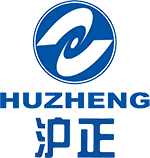The technology start-up headquartered in Redwood City, California has developed a glass window with transparent photovoltaic cells, which it believes will revolutionize the way solar energy is used.
As companies around the world are increasingly committed to expanding and improving renewable energy, solar-based companies have been striving to extract more energy from smaller and smaller solar cells. Some resistance to technology comes from the unsightly appearance of giant solar cells placed on roofs or open spaces.
However, Ubiquitous Energy Inc. took another approach. The company did not work with competitors to try to reduce the size of each solar cell, but designed a solar panel made of almost transparent glass that allows light to pass through unimpeded while entering The invisible range of the spectrum.
Their product consists of an invisible film layer that is approximately one thousandth of a millimeter thick and can be laminated on existing glass components. Obviously, it does not contain the blue-gray tones usually associated with solar panels.
The film uses a film that the company calls ClearView Power to pass light in the visible spectrum while absorbing near-infrared and ultraviolet light waves. Those waves are converted into energy. More than half of the spectrum that can be used for energy conversion falls within these two ranges.
These panels will generate approximately two-thirds of the electricity generated by traditional solar panels. Moreover, although the cost of installing ClearView Power windows is about 20% higher than traditional windows, their prices are cheaper than rooftop installations or remote solar structures.
Miles Barr, the company’s founder and chief technology officer, said he believes that applications are not limited to windows in houses and office buildings.
Barr said: “It can be applied to the windows of skyscrapers; it can be applied to car glass; it can be applied to the glass on the iPhone.” “We do see the future of this technology will be ubiquitously applied to all places around us.”
Solar cells can also be used in other daily applications. For example, highway signs can be self-powered by these solar cells, and supermarket shelf signs can also display product prices that can be updated immediately.
California has been a leader in the transition to renewable energy. The state government’s initiative requires that by 2020, 33% of the state’s electricity will come from alternative sources, and by 2030, half of all electricity will be met by alternative sources.
California this year also began to require all new houses to include some form of solar technology.
You can rest assured that our editorial staff will closely monitor every feedback sent and will take appropriate action. Your opinion is very important to us.
Your email address is only used to let the recipient know who sent the email. Neither your address nor the recipient’s address will be used for any other purpose. The information you enter will appear in your email, and Tech Xplore will not keep them in any form.
This website uses cookies to assist navigation, analyze your use of our services and provide content from third parties. By using our website, you confirm that you have read and understood our privacy policy and terms of use.
Post time: Nov-02-2020
